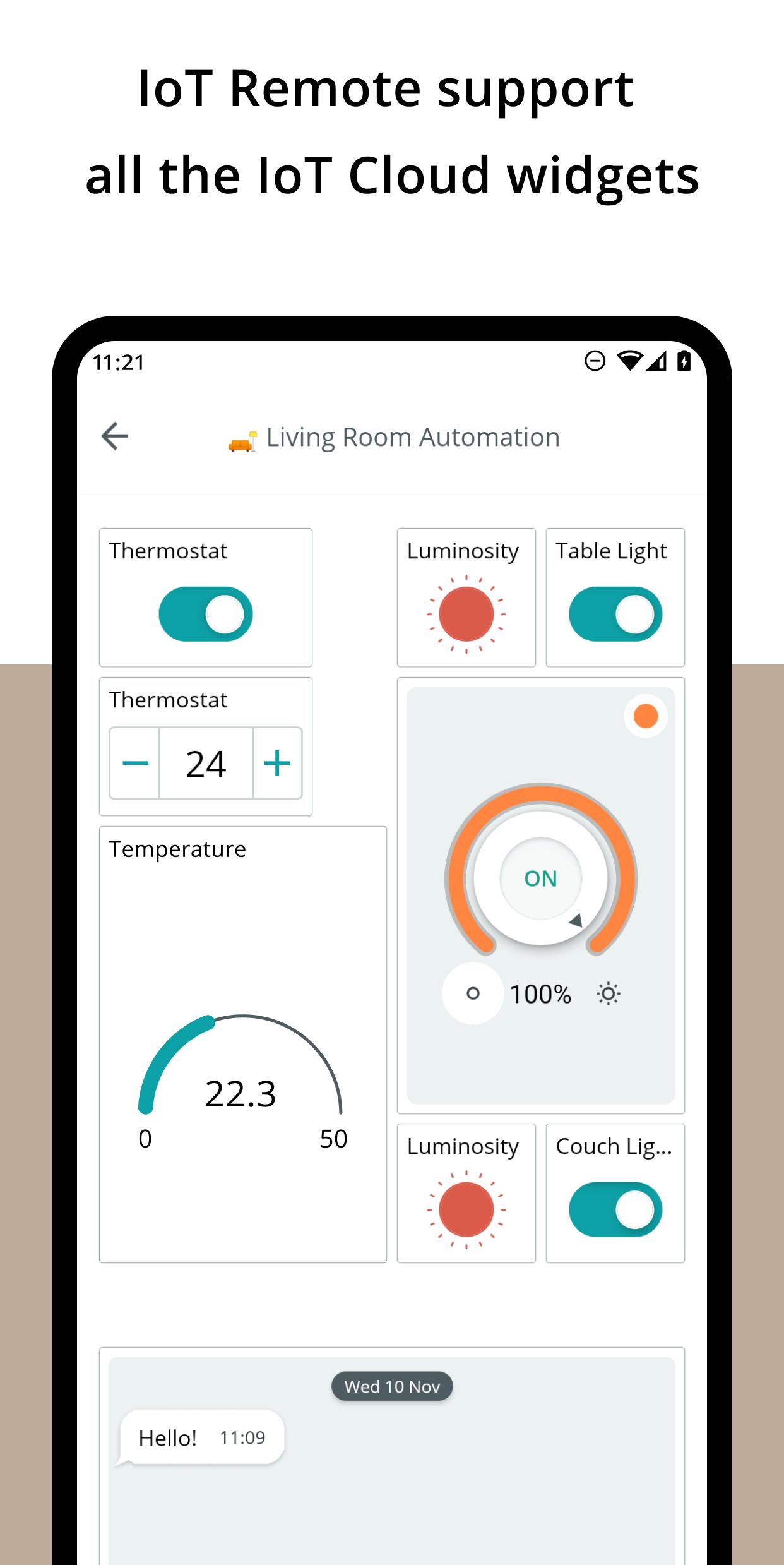Unlock IoT Control: SSH Remote Device Android APK Guide
Are you tired of juggling multiple Internet of Things (IoT) devices, feeling overwhelmed by the complexity of it all? The ability to remotely and securely manage your IoT ecosystem from the palm of your hand is no longer a futuristic fantasy, but a tangible reality, thanks to SSH remote access on Android.
The proliferation of IoT devices has created a double-edged sword. On one hand, we enjoy unprecedented convenience and connectivity. On the other, managing these devices can quickly become a logistical nightmare. Thankfully, advancements in technology offer elegant solutions. Using SSH (Secure Shell) remote access, specifically through an Android application package (APK), users can simplify device management while simultaneously bolstering security. This approach provides a reliable and secure method for connecting to and controlling IoT devices remotely, offering seamless monitoring and control capabilities. It's about regaining control in a world where devices are increasingly vying for it.
The SSH Remote IoT Device Android APK has emerged as a pivotal tool for modern users who crave seamless connectivity and control over their IoT devices. This is where the power of an SSH client on your Android device really shines. It equips you with the flexibility and robust security you need to manage your IoT devices from practically anywhere in the world. For developers, engineers, and tech enthusiasts in our interconnected world, SSH remote IoT device access via Android APK has become an indispensable asset.
With the rapid and continuous expansion of the Internet of Things (IoT), the ability to efficiently manage and interact with remote devices has never been more critical. SSH, or Secure Shell, provides a secure and efficient method for monitoring, configuring, and troubleshooting your devices without requiring your physical presence. The elegance lies in its simplicity and effectiveness. Setting up SSH remote IoT device control on Android does not have to be complicated or daunting.
Heres a breakdown to get you started:
- Download and install your chosen SSH APK on your Android device.
- Configure the SSH server on your IoT device.
SSH tunneling creates an encrypted connection between your Android device and your IoT device. This encrypted "tunnel" allows you to securely transfer data over a network that may not be inherently secure. Following the steps outlined, you can effortlessly connect and manage your devices.
In this guide, we will walk you through the process of SSHing into IoT devices using free tools available on Android. You will be able to gain full control over your connected devices. To SSH into IoT devices using Android, a reliable SSH client is essential. Below are some of the best tools available on the Google Play Store:
A powerful terminal emulator is a must-have; it allows you to run SSH commands directly from your Android device, adding support for scripting and automation.
The SSH Remote IoT Device Android APK delivers users a robust tool for managing their IoT infrastructure directly from their mobile devices. It combines the security of the SSH protocol with the convenience of mobile access, making it an indispensable tool for both professionals and enthusiasts.
If you are entering the world of IoT and want to take remote control of your devices, then the SSH Remote IoT Device Android APK is your golden ticket. This tool is revolutionizing how we interact with our smart devices, offering a seamless way to manage everything from your smartphone.
Before we delve into the specifics of the SSH Remote IoT Device Android APK, let's briefly examine what SSH is and why its crucial for managing IoT devices. SSH, or Secure Shell, is a cryptographic network protocol that allows secure communication between devices over an unsecured network. This security aspect is paramount when dealing with IoT devices, which often handle sensitive data. This offers all the functionality you need without putting a strain on your budget.
Setting up the SSH Remote IoT Device Android APK is straightforward and user-friendly. If youre exploring the IoT landscape and wish to control your devices remotely, the SSH Remote IoT Device Android APK is indeed your gateway. Picture managing your smart gadgets from anywhere globally, right from your smartphone. Imagine being able to monitor your home security system, adjust your smart thermostat, or even troubleshoot a remote server all while away from the physical location.
If you are delving into the world of IoT and are looking for methods to remotely control your devices, you have come to the right place. SSH Remote IoT Device Android APK is your gateway to secure and efficient management of your smart gadgets.
The application of SSH technology with Android devices offers a multitude of advantages for those seeking to manage their IoT networks efficiently and securely. It offers a solution that goes beyond mere convenience, granting control and insight, and safeguarding your information.
The ability to access and control IoT devices remotely through an Android device offers a powerful means to monitor and administer these devices, regardless of your physical location. This remote capability is particularly valuable for troubleshooting, diagnostics, and ensuring devices are running optimally without needing on-site presence.
The use of SSH protocol provides security. SSH uses strong encryption, securing the communication channel between your Android device and your IoT device. This is important to protect sensitive information that might be transmitted across the network. This protection against unauthorized access is vital in the realm of IoT where devices can often be vulnerable.
Implementing SSH remote access via Android APK facilitates efficient device management, including software updates, configuration changes, and performance monitoring. These operations can be executed quickly and without having to be physically present. This streamlined process saves time, reduces operational costs, and enhances overall efficiency.
The user-friendly interface provided by Android apps simplifies interaction with IoT devices. These applications typically offer intuitive controls and visual representations, facilitating easier monitoring and control of devices. This ease of access and management allows users to quickly respond to any issues and fine-tune the performance of their devices.
The benefits of using SSH to manage your IoT devices include:
- Enhanced Security: SSH secures the communication channel using encryption, protecting data.
- Convenience: Control and monitor devices from anywhere, at any time.
- Efficiency: Streamlined management through remote access.
- Cost-Effectiveness: Reduced need for on-site visits.
SSH remote access via Android APK is an exceptional solution for anyone looking to efficiently and securely manage their IoT infrastructure. It enhances security, streamlines operations, and improves overall efficiency. This makes it a valuable tool for both enthusiasts and professionals.
Choosing the right SSH client is important for successful remote management. The Google Play Store has a wide variety of SSH clients, each with its own features and functionalities.
Here are some notable SSH clients available on the Google Play Store:
- JuiceSSH: A popular choice, known for its robust features, including terminal support, SSH key support, and session management.
- Termius: Offers a clean user interface, supports multiple sessions, and provides cross-device syncing.
- ConnectBot: A free and open-source SSH client with a straightforward interface.
- Termux: Provides a complete Linux environment within your Android device.
When choosing an SSH client, consider features like:
- User interface: Look for an interface that is easy to use and navigate.
- Key management: Support for SSH keys enhances security.
- Session management: The ability to save and manage multiple sessions is helpful.
- Terminal support: Make sure the client provides a full terminal experience.
Once youve chosen your preferred SSH client, the next step is configuration. It involves setting up both the Android device and the IoT device to facilitate secure communication.
Heres how to configure SSH remote access:
- Install the SSH client: Download and install the chosen SSH client from the Google Play Store.
- Configure the SSH server on the IoT device: Enable SSH on your IoT device. This will usually involve editing a configuration file and starting the SSH daemon.
- Set up port forwarding (if needed): If the IoT device is behind a router, you may need to set up port forwarding to allow external access.
- Configure the SSH client on your Android device: Enter the IP address or hostname of your IoT device, your username, and your password. Consider using SSH keys for improved security.
After configuration, test the connection to make sure it is working properly. This involves using the SSH client to attempt to connect to your IoT device. Once connected, you can execute commands and manage the device remotely.
Security is a crucial consideration when implementing SSH remote access. Securing your connections protects your IoT devices and your data. Here are best practices for securing your SSH connections:
- Use strong passwords: Choose strong, unique passwords for your SSH logins.
- Use SSH keys: Implement SSH keys instead of passwords for stronger security and ease of access.
- Keep software updated: Regularly update both your SSH client and the SSH server on your IoT devices.
- Disable password authentication (if possible): To further enhance security, disable password authentication and only allow SSH key-based authentication.
- Monitor logs: Check logs frequently for suspicious activity or unauthorized access attempts.
Troubleshooting is an important part of maintaining SSH connections. Here are common problems and how to solve them:
- Connectivity issues: If you cannot connect, check the IP address, hostname, port number, and internet connection. Make sure the SSH server is running on your IoT device.
- Authentication failures: Ensure you are using the correct username and password. If using SSH keys, verify that the keys are correctly configured.
- Firewall issues: Ensure the firewall on your IoT device and your network permits SSH traffic (typically on port 22).
- Incorrect port forwarding: If you are connecting to a device behind a router, verify that port forwarding is correctly configured.
For the beginner, setting up SSH access to IoT devices can appear intimidating. This comprehensive guide offers easy-to-follow instructions to guide you through the process.
1. Get a Reliable SSH Client:
Download an SSH client on your Android device. Popular options include JuiceSSH, Termius, and ConnectBot, all available on the Google Play Store. Select the tool that matches your needs and install it.
2. Configure Your IoT Device to accept SSH Connections:
Access your IoT devices operating system. Depending on the device, this could involve connecting to a terminal or accessing a web interface. You must enable the SSH server, which often involves installing an SSH daemon (like OpenSSH), and ensuring that the device has a fixed IP address or a DHCP reservation. The IP address is crucial for the connection. You may also need to configure your firewall to allow SSH traffic (port 22 by default).
3. Establish the Connection through the SSH Client:
Open the SSH client on your Android device. Enter the IP address or hostname of the IoT device. Enter your username and password for the device. Once entered, the client will attempt to connect to the IoT device. If successful, you will see a command prompt or a terminal interface where you can type commands.
4. Test the Connection and Basic Commands:
Once connected, test the connection by running basic commands on the IoT device. You can use commands like `ls` (to list files), `pwd` (to display the current directory), or `uname -a` (to show kernel information). If these commands execute without errors, the SSH connection is working.
5. Implement Security Measures:
To strengthen security, always use strong passwords. Consider using SSH keys instead of passwords for authentication. Regularly update the SSH client and server software on both your Android device and the IoT device. If you are not using the SSH connection for a long time, close it.
Advanced settings may include:
- Setting up SSH keys.
- Configuring port forwarding for remote access.
- Customizing the SSH client settings.
The use of SSH Remote IoT Device Android APK can provide a substantial positive impact, especially when dealing with devices that have a limited or no display. Its utility and efficiency are evident across various applications.
Imagine setting up a smart home system. You can easily configure smart thermostats, lighting systems, and security cameras. Imagine the ability to remotely monitor your home's energy usage, get alerts about anomalies, and make the necessary adjustments from anywhere in the world. You can also control and monitor industrial automation systems, such as manufacturing equipment and remote sensors. This can help to optimize production, reduce downtime, and improve the efficiency of operations.
The SSH Remote IoT Device Android APK enables the remote management of servers. IT professionals can efficiently monitor servers, deploy updates, and solve problems without needing on-site visits. This capability is incredibly important for ensuring the smooth operation of critical services.
For hobbyists and enthusiasts, it offers the perfect way to experiment with Raspberry Pi and Arduino projects. It offers a convenient way to code, debug, and monitor these DIY projects.
Whether you are a professional or a hobbyist, the ability to use an Android device to remotely manage IoT devices offers a compelling blend of accessibility, flexibility, and security. The use of SSH remote access can transform how you control, monitor, and manage your connected devices.
In an increasingly interconnected world, the ability to remotely and securely manage your IoT ecosystem is not a luxury, but a necessity. SSH remote access via Android APK provides a practical, cost-effective, and highly efficient solution for those who seek to maintain control of their devices. From troubleshooting to advanced configuration, this powerful tool empowers users to interact with their smart devices with confidence.



Detail Author:
- Name : Trycia Morar
- Email : ehyatt@murazik.com
- Birthdate : 1978-07-10
- Address : 85901 Noemy Extension West Vergie, SD 56748-0148
- Phone : 1-520-876-2071
- Company : Hodkiewicz Ltd
- Job : Rail Transportation Worker
- Bio : Quod tempora qui enim perferendis beatae. Facilis nisi amet sequi quis nihil quo at et. Impedit est eligendi recusandae voluptatem suscipit.